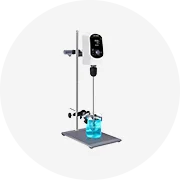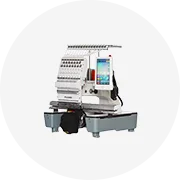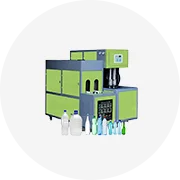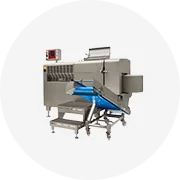Types of Cummins Diesel Engines
A Cummins diesel engine is a renowned name in the world of heavy-duty power solutions. Known for their robustness and reliability, these engines are widely used across commercial, industrial, and even high-performance automotive applications. Cummins has engineered various series tailored to specific performance needs, ranging from fuel-efficient medium-duty units to rugged, high-output industrial workhorses.
Each model in the Cummins lineup serves a unique purpose and is designed with specific features that optimize it for certain environments or tasks. Whether you're looking for an engine for long-haul trucking, construction equipment, or agricultural machinery, there's likely a Cummins engine perfectly suited for the job. Below is a detailed breakdown of some of the most popular Cummins diesel engine series:
ISB Series
The ISB Series is a versatile medium-duty diesel engine designed for applications requiring balance between efficiency and durability. With its compact design and modern engineering, this engine offers excellent fuel economy while maintaining consistent power output.
Advantages
- High fuel efficiency
- Low emissions profile
- Compact and lightweight design
- Smooth operation under normal load conditions
Limitations
- Not ideal for extreme heavy-duty cycles
- Limited torque compared to larger models
Best for: Medium-duty trucks, urban buses, delivery fleets, and commercial vehicles where fuel economy matters.
ISL Series
The ISL Series represents a step up in both size and capability, built specifically for long-distance hauling and heavy transport. Featuring advanced technologies like turbocharging, intercooling, and precise electronic fuel control systems, this engine delivers powerful performance and impressive torque characteristics.
Advantages
- Excellent power-to-weight ratio
- High torque output at low RPMs
- Reliable under sustained heavy loads
- Optimized for highway driving conditions
Limitations
- Higher fuel consumption than lighter models
- More complex maintenance requirements
Best for: Long-haul trucking, freight logistics, and transportation services where endurance and consistent performance are critical.
QSB Series
The QSB Series engines combine strength with quiet operation, making them ideal for applications where noise levels and environmental impact matter. These engines deliver smooth, reliable power while offering improved serviceability and lower maintenance demands.
Advantages
- Quieter operation than many competitors
- Easy access for maintenance and repairs
- Good fuel efficiency for their power class
- Proven reliability in harsh environments
Limitations
- Less suitable for ultra-heavy mining operations
- May require periodic tuning for peak performance
Best for: Construction equipment, agricultural vehicles, and industrial machinery requiring durable yet relatively quiet operation.
QSL Series
The QSL Series engines are built for demanding applications that require serious grunt and long-term dependability. Designed for heavy industries such as mining, oilfield services, and forestry, these engines are engineered to withstand extreme conditions and deliver consistent performance over extended periods.
Advantages
- Exceptional durability under stress
- Strong low-end torque for tough jobs
- Designed for continuous duty cycles
- Robust cooling and lubrication systems
Limitations
- Heavier and more complex than smaller engines
- Higher cost of ownership due to scale and parts
Best for: Mining rigs, logging equipment, drilling platforms, and other heavy industrial applications where raw power and reliability are paramount.
6.7L I6 Turbodiesel Engine (ISB)
The 6.7L I6 Turbodiesel Engine, also known as the Cummins ISB, is a high-performance inline six-cylinder engine developed in collaboration with Chrysler. This engine features direct fuel injection and a variable geometry turbocharger, delivering exceptional towing capacity and responsive power delivery.
Advantages
- Outstanding towing and hauling capabilities
- Responsive throttle thanks to VGT technology
- Available in both commercial and consumer configurations
- Long-lasting build quality
Limitations
- Requires regular maintenance for optimal performance
- Can be overkill for light-duty usage
Best for: Heavy-duty pickup trucks, commercial haulers, RVs, and high-performance applications where torque and pulling power are essential.
| Engine Series | Primary Use Case | Fuel Efficiency | Durability | Key Features |
|---|---|---|---|---|
| ISB Series | Medium-duty trucks, buses | High | Good | Compact design, low emissions, fuel efficient |
| ISL Series | Long-haul trucking, logistics | Moderate | Excellent | Turbocharged, intercooled, high torque |
| QSB Series | Construction, agriculture | Good | Very Good | Quiet operation, easy maintenance |
| QSL Series | Mining, oilfield, forestry | Fair | Excellent | Heavy-duty components, high torque |
| 6.7L I6 Turbodiesel | Trucks, RVs, performance | Moderate | Excellent | VGT, direct injection, high towing capacity |
Expert Tip: When selecting a Cummins diesel engine, always consider your specific application’s load demands, operating environment, and maintenance capabilities. For example, choosing a QSL Series for heavy mining will provide better longevity than using a lighter-duty engine in the same conditions.
Specifications and Maintenance of Cummins Diesel Engines
Engine Specifications Overview
Cummins diesel engines are renowned for their durability, efficiency, and performance across a wide range of applications. Understanding the key specifications helps ensure proper operation, maintenance, and replacement decisions.
Variable Geometry Turbocharger (VGT)
The N14, QSM11, and ISM series Cummins engines utilize Variable Geometry Turbochargers to dynamically adjust airflow based on engine load and RPM. This advanced technology enhances low-end torque, improves fuel economy, and reduces emissions by optimizing air intake efficiency.
VGT systems feature adjustable vanes within the turbine housing that control exhaust gas flow. This adaptability is especially valuable in heavy-duty environments where varying operational demands require consistent power delivery without sacrificing fuel efficiency.
Cooling System Design
Cummins engines employ robust cooling systems engineered to manage heat generated during combustion and mechanical operation. The system includes high-capacity radiators, coolant pumps, thermostats, and strategically designed coolant passages throughout the engine block.
Efficient thermal management prevents overheating, which can cause catastrophic engine damage including warped cylinder heads and piston failure. Regular coolant checks and radiator cleaning are essential to maintain optimal operating temperatures under all conditions.
Fuel Delivery System
Cummins fuel systems are precision-engineered to deliver accurate fuel quantities at high pressure for complete combustion. Components include electronically controlled injectors, high-pressure fuel pumps, and multi-stage filtration systems that protect against particulate contamination.
The fuel injectors atomize fuel into fine mist for efficient mixing with compressed air, while the pump maintains stable pressure levels. Proper fuel system maintenance ensures long-term reliability, reduced emissions, and optimal fuel economy.
Lubrication System
The oil system circulates lubricant throughout the engine to reduce friction between moving parts, dissipate heat, and carry away contaminants. Key components include an oil pump, filter, galleries, and pressure monitoring sensors.
Regular oil changes using Cummins-recommended viscosity grades help preserve engine integrity. Oil analysis programs can also provide early warning signs of wear or contamination before serious damage occurs.
Emission Control Technology
To meet stringent environmental standards, Cummins integrates advanced emission reduction technologies such as Diesel Particulate Filters (DPF), Selective Catalytic Reduction (SCR) systems, and Exhaust Gas Recirculation (EGR).
The DPF captures soot particles from exhaust gases, while the SCR system uses DEF (Diesel Exhaust Fluid) to convert NOx into nitrogen and water. These systems must be maintained according to manufacturer guidelines to avoid fault codes and ensure compliance.
Power Generation Applications
Cummins' QSK series engines are widely used in power generation for both prime and standby power solutions. These engines deliver high output with exceptional reliability, making them ideal for hospitals, data centers, and industrial facilities requiring uninterrupted power supply.
Designed for continuous operation, these engines incorporate features like reinforced crankshafts, enhanced cooling capacity, and automated control systems for seamless integration into electrical grids and backup systems.
Marine Propulsion Systems
Cummins marine engines, particularly the KTA and QSK series, offer powerful and efficient propulsion solutions for commercial shipping, fishing vessels, and luxury yachts. These engines are built to withstand harsh saltwater environments while delivering consistent performance.
They comply with international marine emission regulations and feature corrosion-resistant materials, specialized aftertreatment systems, and robust mounting configurations suitable for dynamic sea conditions.
| Specification | Criticality | Maintenance Guidance |
|---|---|---|
| Turbocharger Efficiency | High | Inspect for boost leaks, carbon buildup, and vane movement issues; replace when turbo fails to hold pressure or shows signs of wear. |
| Coolant pH Level | Medium-High | Maintain between 6-8; acidic coolant accelerates internal corrosion and should be flushed immediately. |
| Fuel Filter Replacement Interval | High | Follow recommended schedule (typically every 250 hours or 15,000 miles); use OEM filters for best protection. |
| Oil Viscosity Grade | Medium | Select based on ambient temperature and engine type; consult Cummins service manual for specific recommendations. |
| DPF Regeneration Cycle | High | Ensure active regeneration completes regularly; frequent short trips may require manual regeneration via diagnostic tools. |
Recommended Maintenance Practices
Proper maintenance is crucial for maximizing engine lifespan, maintaining performance, and complying with emissions standards. Below are essential maintenance procedures:
Important: Failure to perform regular maintenance can result in significant engine damage, void warranties, and lead to costly downtime. Always follow Cummins’ official service schedules and use genuine Cummins parts and fluids for optimal performance and reliability.
How to Choose a Cummins Diesel Engine
Selecting the right Cummins diesel engine for sale requires careful evaluation of several technical and practical factors. Whether you're choosing an engine for commercial vehicles, industrial machinery, or marine applications, understanding these key considerations will help ensure long-term performance, efficiency, and value.
Power Requirements
The intended application of the engine plays a major role in determining the appropriate power output and torque specifications. Cummins offers a wide range of engines designed for different load capacities and performance needs.
- Heavy-duty applications (e.g., semi-trucks, construction equipment) require high horsepower and torque
- Medium-duty uses (e.g., delivery vans, school buses) benefit from balanced performance and economy
- Light-duty applications (e.g., pickup trucks, small generators) can operate efficiently on lower-output models
Key consideration: Match engine specs to your vehicle's workload profile and terrain demands
Size and Weight
The physical dimensions and weight of the engine are crucial when considering installation constraints and portability. Larger engines typically offer more power but may be unsuitable for compact spaces or mobile applications.
- Check available clearance in engine bay or installation area
- Verify mounting points and compatibility with existing systems
- Consider accessibility for maintenance and repairs
Measurement tip: Always compare engine dimensions against manufacturer specifications before purchase
Fuel Efficiency
Fuel consumption directly affects operational costs over the life of the engine. While higher-powered engines tend to consume more fuel, modern Cummins models incorporate advanced technologies to optimize efficiency without sacrificing performance.
- Look for engines with variable geometry turbochargers for improved fuel economy
- Engines equipped with common rail fuel systems provide precise fuel metering
- Consider hybrid-ready options for future fuel savings
Performance impact: Efficient combustion reduces both fuel cost and emissions
Emissions Compliance
Environmental regulations such as EPA Tier standards must be considered based on your region and usage. Cummins has developed multiple generations of engines that meet various emission levels while maintaining performance integrity.
- Newer models include selective catalytic reduction (SCR) systems
- Exhaust gas recirculation (EGR) helps reduce NOx emissions
- Diesel particulate filters (DPF) capture harmful soot particles
Regulatory note: Verify local emissions requirements before selecting an engine model
Total Cost of Ownership
While initial purchase price is important, it’s essential to evaluate the full lifecycle cost including maintenance, parts replacement, and fuel consumption over time.
- Higher-quality engines often have longer service intervals and durability
- Some models use widely available, standardized components
- Warranty coverage varies by model and application type
Value insight: Investing in a premium model can lead to significant savings over years of operation
Reliability and Durability
Cummins engines are known for their ruggedness and longevity, but specific models have proven track records in particular environments. Choosing an engine with a history of reliability in your intended use case is critical.
- Industrial engines built for continuous duty cycles
- Marine versions designed for corrosion resistance and moisture protection
- Commercial truck engines optimized for long-haul endurance
Longevity factor: Proper maintenance significantly extends engine lifespan regardless of model
Purchase Advice: When evaluating used Cummins engines, always verify service history, mileage (if applicable), and any signs of oil leaks or overheating. If possible, conduct a compression test and review oil analysis reports to assess internal wear and condition.
| Application Type | Recommended Series | Typical Horsepower Range | Key Features |
|---|---|---|---|
| Heavy-Duty Trucking | Cummins X15 | 400-605 HP | XPI fuel system, integrated braking, EPA-certified aftertreatment |
| Medium-Duty Delivery | Cummins L9 | 250-400 HP | Compact design, low maintenance, excellent fuel economy |
| Industrial Equipment | Cummins QSL9 | 200-380 HP | Robust architecture, flexible mounting, global support |
| Marine Applications | Cummins QSC8.3 | 300-450 HP | Corrosion-resistant components, seawater cooling readiness |
Noise and Vibration Levels
Engine noise and vibration affect operator comfort and environmental impact. Modern Cummins engines incorporate sound-dampening technology and refined combustion processes to minimize disturbances.
- Engines with rubber-mounted components reduce vibration transmission
- Advanced injection timing lowers combustion noise
- Integrated exhaust silencers help meet noise regulations
Comfort factor: Consider acoustic enclosures for stationary generator sets
Installation and Integration
Some Cummins engines are designed for easy integration into existing platforms, while others may require custom modifications. Understanding the level of complexity involved in installation is vital for project planning and budgeting.
- Factory-engineered kits simplify retrofitting
- Electronic control modules (ECMs) must match vehicle systems
- Ensure proper alignment with transmission and drivetrain components
Professional recommendation: Consult a certified technician for complex installations
How to DIY and Replace a Cummins Diesel Engine
Replacing a Cummins diesel engine can be a complex but rewarding DIY project for those with mechanical experience. Known for their durability and performance, Cummins engines are commonly found in trucks, commercial vehicles, and industrial equipment. This guide provides a structured approach to replacing your Cummins diesel engine safely and effectively.
Safety Warning: Working with heavy machinery and high-torque components poses risks. Always wear protective gear such as gloves, safety glasses, and steel-toed boots. Ensure the vehicle is properly supported on jack stands and never rely solely on hydraulic jacks during the process.
Step-by-Step Guide to Replacing a Cummins Diesel Engine
- Read the Service Manual Thoroughly
The first and most critical step before beginning any engine replacement is to obtain and study the official service manual for your specific Cummins model. Whether it's a B-series (like the 5.9L), ISB, or larger ISX engine, each has unique specifications, torque values, and installation procedures.
The manual will include:
- Detailed diagrams of engine layout and connections
- Torque specifications for cylinder heads, manifolds, and mounting bolts
- Recommended tools and special equipment needed
- Safety guidelines for handling fuel systems and high-pressure components
If you don't have a physical copy, many manufacturers offer digital versions online. If no manual is available, at least verify your engine’s serial number and model year to ensure accurate component compatibility.
- Gather the Necessary Tools and Equipment
Working on a Cummins diesel requires more than just basic tools. You'll need a comprehensive set including:
- Socket sets (standard and metric)
- Ratchet extensions and universal joints
- Breaker bar and torque wrench
- Oil filter wrench and fuel line wrenches
- Engine hoist with appropriate lifting straps or chains
- Jacking system with heavy-duty jack stands
- Drain pans for oil, coolant, and diesel fuel
- Cable ties or labels for marking harnesses and lines
Ensure all tools are in good condition and rated for the job. A broken socket or stripped bolt can lead to costly delays and damage to surrounding components.
- Prepare a Well-Lit and Organized Workspace
A clean, well-lit workspace is essential when working on large diesel engines. Poor visibility increases the risk of misconnections or dropped tools that could damage sensitive parts like injectors or sensors.
Your workspace should also allow for:
- Safe movement of heavy tools and equipment
- Storage of removed components without risk of contamination
- Easy access to both sides of the engine bay
Before starting, disconnect the battery ground cable to prevent accidental electrical shorts and ensure the vehicle is securely immobilized with wheel chocks.
- Follow Step-by-Step Instructions from the Manual
Whether you're removing an older 12-valve Cummins or installing a newer common-rail version, following the manufacturer's instructions is crucial. Here’s a general outline of what to expect during the removal and installation process:
Stage Key Tasks Common Pitfalls Essential Tools Preparation Verify engine model, gather tools, drain fluids Mismatched replacement engine, missing tools Service manual, camera for reference photos Disconnection Disconnect battery, label wires, remove exhaust and mounts Mislabeling connectors, fluid spills Marker, zip ties, drain pans Removal Support engine, unbolt mounts, lower engine carefully Improper support causing frame damage Engine hoist, jack stands, breaker bar Installation Align new engine, install mounts, reconnect systems Cross-threaded bolts, improper alignment Torque wrench, alignment pins Final Checks Refill fluids, test start, check for leaks Overlooking vacuum or sensor connections Fluid testers, pressure gauges Pro Tip: Take photos at every stage of disassembly to help with reassembly. Label every wire, hose, and connector with numbered tags to avoid confusion later. Reuse gaskets only if they are in perfect condition; otherwise, replace them with OEM-quality parts.
After installing the new engine, refill all fluids using the correct type and grade recommended by Cummins. For example, 15W-40 synthetic oil is typically used in heavy-duty applications, while coolant should be a mix suitable for diesel engines (often DCA4-compliant).
Post-Replacement Testing and Break-In
Once everything is connected and torqued to specification, it’s time to test the new engine:
- Reconnect the battery and inspect all electrical connections
- Turn the key to the "On" position to prime the fuel system
- Start the engine and let it idle for several minutes
- Listen for unusual noises and monitor temperature and oil pressure
- Conduct a full visual inspection for leaks or loose connections
For the first few hours of operation, follow the break-in procedure outlined in the manual. This may involve avoiding high RPMs or heavy loads until internal components are properly seated.
Diesel Cummins Engine FAQ
When it comes to choosing between a 12V and 24V electrical system for a diesel Cummins engine, there is no universally "better" option — the decision largely depends on your specific needs and usage scenario. Here's a breakdown of both systems:
- 12V Systems: These are typically found in older Cummins engines and are simpler in design. They're ideal for basic applications where high electrical demand isn't a priority. Vehicles equipped with minimal electronics and accessories often operate efficiently on a 12V system.
- 24V Systems: Modern Cummins engines often use 24V systems to support advanced features like electronic fuel injection, onboard diagnostics (OBD), and other high-tech components. A 24V system provides greater power output, which improves performance and reliability in vehicles with higher electrical demands.
A revised or upgraded Cummins engine can be adapted to work well with either voltage system. The choice should consider factors such as:
- The vehicle’s intended use (e.g., daily driving vs. heavy towing)
- Electrical load requirements from accessories (winches, lighting, tuning modules)
- Availability of replacement parts and service support
In summary, while a 24V system offers advantages in modern performance and efficiency, a 12V system remains a reliable option for simpler setups. Your preference and application will ultimately determine the best choice.
One of the most impressive features of a diesel Cummins engine is its exceptional longevity. With proper maintenance and responsible usage, a Cummins diesel engine can last anywhere from **200,000 to 500,000 miles** — and in some cases even more. This wide range reflects variations in operating conditions, maintenance frequency, and driving habits.
Key factors that influence engine lifespan include:
- Regular oil changes: Clean oil ensures smooth operation and reduces wear on internal components.
- Fuel quality: Using clean, high-grade diesel helps prevent injector and pump failures.
- Driving style: Aggressive driving, excessive idling, and frequent towing under high stress can shorten engine life.
- Cooling system maintenance: Keeping the radiator, coolant, and thermostat in good condition prevents overheating and internal damage.
Commercial truck drivers and fleet operators often report Cummins engines surpassing the 500,000-mile mark when maintained according to manufacturer guidelines. In personal vehicles, especially those used for light to moderate towing, owners can expect 300,000+ miles of dependable service.
Among the various issues that can affect diesel engines, **hard starting** is one of the most commonly reported problems. This issue can manifest as prolonged cranking before ignition, failure to start altogether, or rough starts accompanied by smoke or unusual noises.
Common causes of hard starting in diesel engines include:
- Low battery power: Diesel engines require substantial cranking power. A weak or aging battery may not provide enough voltage to properly engage the starter motor or glow plugs.
- Faulty glow plugs: Glow plugs help preheat the combustion chamber, especially in cold weather. If they fail, the engine may struggle to ignite the fuel-air mixture.
- Fuel system issues: Contaminated fuel, clogged filters, or malfunctioning injectors can all disrupt the precise fuel delivery required for efficient combustion.
- Timing problems: Incorrect injection timing due to a faulty timing belt or camshaft sensor can lead to poor compression and difficulty starting.
- Low compression: Worn piston rings or cylinder walls reduce compression, making it harder for the engine to fire up, particularly after sitting idle for extended periods.
To minimize hard starting issues, regular maintenance of the battery, glow plugs, fuel filters, and injection system is essential. Additionally, using high-quality diesel fuel and keeping the engine warm in cold climates can significantly improve starting performance.










































